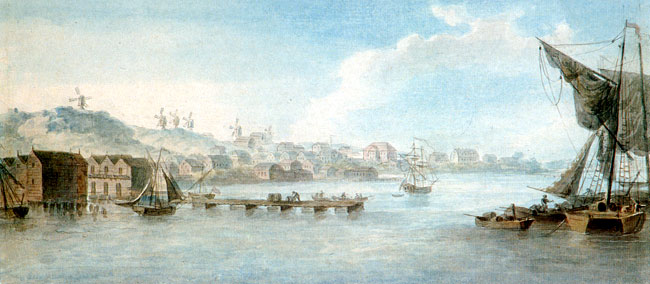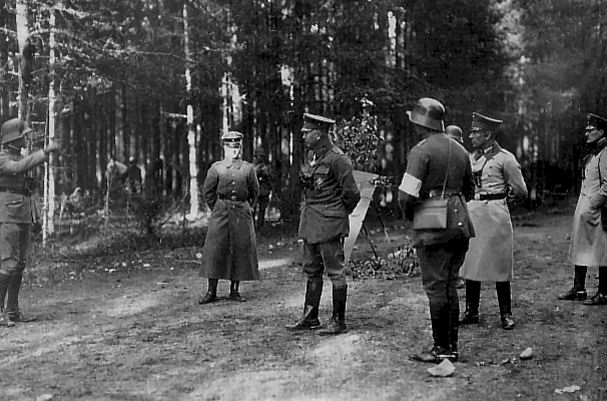|
Detachment Brandenstein
Detachment Brandenstein was a unit commanded by German Baron Otto von Brandenstein. The 3,000 man unit which fought in the Finnish Civil War by landing at Loviisa April 7, 1918. Its assigned mission was to cut the Reds' railway connections by attacking to the East, thus cutting the railway between Helsinki Helsinki ( or ; ; sv, Helsingfors, ) is the capital, primate, and most populous city of Finland. Located on the shore of the Gulf of Finland, it is the seat of the region of Uusimaa in southern Finland, and has a population of . The city ... and Viipuri. The major operation for Detachment Brandenstein was the Battle of Lahti in 19 April – 1 May. Later the unit was attached to the Baltic Sea Division. References *Arimo, Reino (1995): ''Saksalaisten sotilaallinen toiminta Suomessa 1918'' . * Military units and formations of Germany in World War I Finnish Civil War {{Germany-mil-unit-stub ... [...More Info...] [...Related Items...] OR: [Wikipedia] [Google] [Baidu] |
Baron
Baron is a rank of nobility or title of honour, often hereditary, in various European countries, either current or historical. The female equivalent is baroness. Typically, the title denotes an aristocrat who ranks higher than a lord or knight, but lower than a viscount or count. Often, barons hold their fief – their lands and income – directly from the monarch. Barons are less often the vassals of other nobles. In many kingdoms, they were entitled to wear a smaller form of a crown called a '' coronet''. The term originates from the Latin term , via Old French. The use of the title ''baron'' came to England via the Norman Conquest of 1066, then the Normans brought the title to Scotland and Italy. It later spread to Scandinavia and Slavic lands. Etymology The word '' baron'' comes from the Old French , from a Late Latin "man; servant, soldier, mercenary" (so used in Salic law; Alemannic law has in the same sense). The scholar Isidore of Seville in the 7th cent ... [...More Info...] [...Related Items...] OR: [Wikipedia] [Google] [Baidu] |
Otto Von Brandenstein
Otto Freiherr von Brandenstein (21 October 1865 – 8 May 1945) was a German officer. He joined the Prussian Army in 1885 and was promoted to oberstleutnant in 1913. During World War I, Brandenstein served in the Western Front as a staff officer under the command of the generals Gustav Freiherr von Hollen and Eberhard von Claer. In 1918, colonel Brandenstein was the commander of the formed cavalry brigade Detachment Brandenstein which landed in Loviisa, Finland in 3 April. The brigade joined the Finnish Civil War and fought with the Finnish Whites. After the Battle of Lahti, the unit was attached to the Baltic Sea Division. Otto von Brandenstein was awarded the ''Pour le Mérite The ' (; , ) is an order of merit (german: Verdienstorden) established in 1740 by King Frederick II of Prussia. The was awarded as both a military and civil honour and ranked, along with the Order of the Black Eagle, the Order of the Red Eag ...'' on 15 May 1918 and promoted to Major General on 1 ... [...More Info...] [...Related Items...] OR: [Wikipedia] [Google] [Baidu] |
Finnish Civil War
The Finnish Civil War; . Other designations: Brethren War, Citizen War, Class War, Freedom War, Red Rebellion and Revolution, . According to 1,005 interviews done by the newspaper ''Aamulehti'', the most popular names were as follows: Civil War 29%, Citizen War 25%, Class War 13%, Freedom War 11%, Red Rebellion 5%, Revolution 1%, other name 2% and no answer 14%, was a civil war in Finland in 1918 fought for the leadership and control of the country between Whites (Finland), White Finland and the Finnish Socialist Workers' Republic (Red Finland) during the country's transition from a Grand Duchy of Finland, grand duchy of the Russian Empire to an independent state. The clashes took place in the context of Aftermath of World War I, the national, political, and social turmoil caused by World War I (Eastern Front (World War I), Eastern Front) in Europe. The war was fought between the "Reds", led by a section of the Social Democratic Party of Finland, Social Democratic Party, and ... [...More Info...] [...Related Items...] OR: [Wikipedia] [Google] [Baidu] |
Loviisa
Loviisa (; sv, Lovisa ; formerly Degerby) is a municipality and town of inhabitants () on the southern coast of Finland. It is located from Helsinki and from Porvoo. About 43 per cent of the population is Swedish-speaking. The municipality covers an area of of which is water. The population density is . The neighboring municipalities of Liljendal, Pernå and Ruotsinpyhtää were consolidated with Loviisa on 1 January 2010. Loviisa was founded in 1745, as a border fortress against Russia. Most of the fortifications have been preserved. Loviisa was originally called ''Degerby'', but king Adolf Frederick of Sweden renamed the city after his spouse Lovisa Ulrika after visiting the town in 1752. Loviisa is the site of two of Finland's nuclear reactors, two VVER units each of 488 MWe, at the Loviisa Nuclear Power Plant. The other operating reactors are at the Olkiluoto Nuclear Power Plant. History 18th century The town of Degerby was founded on the grounds of ... [...More Info...] [...Related Items...] OR: [Wikipedia] [Google] [Baidu] |
Helsinki
Helsinki ( or ; ; sv, Helsingfors, ) is the capital, primate, and most populous city of Finland. Located on the shore of the Gulf of Finland, it is the seat of the region of Uusimaa in southern Finland, and has a population of . The city's urban area has a population of , making it by far the most populous urban area in Finland as well as the country's most important center for politics, education, finance, culture, and research; while Tampere in the Pirkanmaa region, located to the north from Helsinki, is the second largest urban area in Finland. Helsinki is located north of Tallinn, Estonia, east of Stockholm, Sweden, and west of Saint Petersburg, Russia. It has close historical ties with these three cities. Together with the cities of Espoo, Vantaa, and Kauniainen (and surrounding commuter towns, including the eastern neighboring municipality of Sipoo), Helsinki forms the Greater Helsinki metropolitan area, which has a population of over 1.5 million. Of ... [...More Info...] [...Related Items...] OR: [Wikipedia] [Google] [Baidu] |
Battle Of Lahti
Battle of Lahti was a 1918 Finnish Civil War battle, fought from 19 April to 1 May between the German troops and Finnish Whites against the Finnish Reds in Lahti, Finland. Together with the Battle of Vyborg, from 24 to 29 April, it was the last major battle of the war. The German unit Detachment Brandenstein, commanded by the colonel Otto von Brandenstein, attacked Lahti on 19 April, taking the town by the next evening. At the same time, a column of tens of thousands of Red refugees was approaching Lahti from the west. On 22 April, the Reds launched a counterattack in order to break through the German lines and clear way for the fleeing people. The attempt failed and the Reds finally surrendered on 1 May. As a result, the Whites and Germans captured about 30,000 Reds and their family members who were placed to a concentration camp in the outskirts of Lahti. Background At the time of the Finnish Civil War, Lahti had a population of 6,500. The town was important for the Reds ... [...More Info...] [...Related Items...] OR: [Wikipedia] [Google] [Baidu] |
Baltic Sea Division
The Baltic Sea Division () was a 10,000 man German military unit commanded by Rüdiger von der Goltz. The core of the division comprised two army brigades from the German Eastern Front: 95. Reserve Infantry Brigade (led by Colonel K. Wolff) and 2. Guards Cavalry Brigade (led by Colonel H. von Tschirsky und von Bögendorff). They were supported by additional artillery and pioneer troops, and transported to Finland by a naval squadron led by Hugo Meurer. The military activity of the division in Finland served part of the foreign policy of the German Empire after the Treaty of Brest-Litovsk with Soviet Russia, signed on 3 March 1918. Germany aimed to establish a chain of satellite states in eastern Europe in order to provide raw materials for German industry and food products for the German people. The Finnish Senate of Vaasa had requested German military aid for the Whites. The Finnish Senate paid all the financial costs of the military intervention of the Baltic Sea Division and u ... [...More Info...] [...Related Items...] OR: [Wikipedia] [Google] [Baidu] |
Military Units And Formations Of Germany In World War I
A military, also known collectively as armed forces, is a heavily armed, highly organized force primarily intended for warfare. It is typically authorized and maintained by a sovereign state, with its members identifiable by their distinct military uniform. It may consist of one or more military branches such as an army, navy, air force, space force, marines, or coast guard. The main task of the military is usually defined as defence of the state and its interests against external armed threats. In broad usage, the terms ''armed forces'' and ''military'' are often treated as synonymous, although in technical usage a distinction is sometimes made in which a country's armed forces may include both its military and other paramilitary forces. There are various forms of irregular military forces, not belonging to a recognized state; though they share many attributes with regular military forces, they are less often referred to as simply ''military''. A nation's military may f ... [...More Info...] [...Related Items...] OR: [Wikipedia] [Google] [Baidu] |

.jpg)


